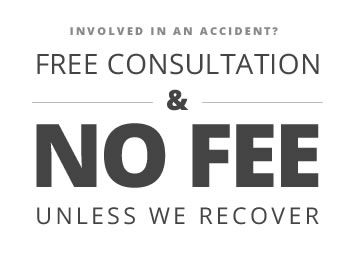RELEASES WHEN THERE IS OTHER COVERAGE
A very typical occurrence in Maryland, and most other states, is the use of underinsurance, (“UIM”), in an auto accident case. For the sake of this discussion let’s assume that our client has been struck in the rear causing considerable injury. Let’s also assume that the injury requires significant treatment and that I conclude that the case is worth something over $100,000.
Let’s assume that the Defendant maintained insurance coverage in the amount of $50/100 – meaning the most that one claimant would be entitled to would be $50,000. That would mean that the most our client could recover from this Defendant’s insurer would be $50,000. But we have determined, in our opinion, that a jury verdict would bring something over $100,000. Let’s assume that the Defendant’s carrier has offered up the entire policy limits of $50,000.
Now we look at our client’s insurance policy in order to determine the amount of underinsurance available. Normally, this amount will be the same as the insured’s liability/uninsured coverage. Let’s assume that our client carried a $100/300 policy. We would then say that the Defendant was underinsured to our client by $50,000. That would mean that the most additional coverage that might be available to the client would be $50,000.
In Maryland, as in many other states, in order to utilize this underinsurance coverage the amount of available UIM coverage MUST exceed the Defendant’s coverage. Thus, if my client’s UIM coverage was also $50/100 there would be no additional monies available and, thus, no UIM claim. In some states one may “stack” UIM coverage on top of whatever is available from the Defendant’s coverage. Since we
are dealing with Maryland in this discussion we would have the additional $50,000 UIM coverage available.
Now in Maryland there is a statutory procedure that must be followed should one wish to pursue a UIM claim. Once the underlying settlement of $50,000 is reached, that insurer will send a letter to the attorney noting the offer of policy limits. At that time, and prior to any acceptance or distribution, the attorney must send a letter to the UIM carrier advising of the policy limits offer and noting the intention to make a claim against any available UIM funds. The potential UIM insurer then has 60 days to decide whether they wish to subrogate back against the Defendant personally or waive subrogation. What this means is that the UIM carrier has the right to recoup directly from the Defendant any monies paid through a UIM claim. Should the potential UIM carrier discover that the Defendant has little if any assets that could be attached to recoup they will like waive subrogation.
The only significant impact to the client’s case from the UIM carrier’s decision is who pays the underlying $50,000. If the UIM carrier waives subrogation then the Defendant’s insurer will forward the $50,000 – should the UIM carrier decline to waive subrogation and wishes to maintain its right to subrogation, the UIM carrier forwards the $50,000 to our client and then is repaid by the Defendant’s insurer once the UIM claim is completed.
In either case, the matter of a release comes into play. If, for instance, the UIM carrier waives subrogation the Defendant carrier will forward the $50,000 and a Release. The Release will normally have verbiage something to the effect that the client/claimant by accepting the $50,000 from the Defendant is “hereby waiving any and all claims he/she may have against the insured, (the Defendant) and any and all other persons who are or may be liable to pay damages. That could include the UIM carrier, and in fact, that very question recently held up a settlement for over 2 years. Therefore, whenever one signs a release for an accident it is imperative to read it to make sure that by executing the release one is not giving up rights to pursue other potential defendants or other possible liable parties.
In our case, therefore, I would add somewhere obvious on the Release in bold type that “this Release does not pertain to any underinsurance claim that may be brought by the Releasor, (the client), against, the UIM carrier (name the carrier).” Make sure the claimant/client signs and/or initials next to this added sentence. This should be sufficient to settle the underlying claim and distribute the initial $50,000, while maintaining the client’s right to make the UIM claim.


